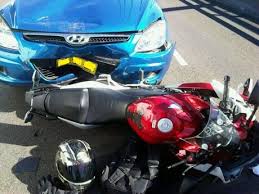get a motorcycle licence qld

Skip to main content HomeInformation and ServicesTransport and RegionalRegistration and licencesDriving with an overseas licence Driving with an overseas licence In Australia, laws and driving regulations differ from state to state. Some states require you to carry an International Licence with your current foreign licence. Other states request you carry your current foreign driver's licence together with a formal translation of your licence into English. In most Australian states and territories (the exception is the Northern Territory), you are able to drive on a overseas licence as long as it is current. You can only drive vehicles which your overseas licence authorises you to drive and you must drive according to any conditions on your overseas licence. Select the state or territory you will be driving in to find out what the laws are for driving with an overseas licence. Did you find the information you were looking for? Your feedback helps us improve australia.gov.au.

Hey Lifehacker, I have a full NSW licence and just recently was caught speeding in Victoria. I was going 35 km over the limit and I lost my licence automatically for 6 months. The judge told me I was banned from driving in Victoria. Does this mean I cannot drive in NSW also? No one can tell me and on the RTA website my licence details have not changed. I have 2 months to pay the fine. Will the RTA let me know if my licence is suspended? Australia's road and traffic authorities are independently run by each state and territory. However, the systems are all interconnected via the Australian Road Rules agreement and the Demerit Points Scheme. The latter is a national program that allocates penalty points (demerits) for a range of driving offences. Any demerit points you incur while driving interstate still apply to your licence back home. With that said, the actual road rules and associated penalties can vary slightly from state to state. As the Australian National Transport Commission explains on its website:

Road rules have no legislative force of their own. Although each state and territory has by and large copied the Rules into their own laws, not every provision of the Rules has been copied exactly in each state and territory. Also, there are a number of provisions in the Rules that specifically leave certain matters to state and territory governments to determine. In most cases, the interstate licence authority will report the offence to the equivalent body in the driver's home state, which will then record the number of points that would be applicable if the offence had occurred there. This means that a suspension in one state might not necessarily apply in the state where the licence was issued. When it comes to your specific case, there's a slight chance you might be in luck. VicRoads will suspend a driver's licence for six months if they are caught driving between 35km/h and 45km/h above the speed limit. By contrast, the same offence will typically incur a three-month licence suspension in NSW.

However, this is largely at the discretion of the police officer who issued the fine and usually involves an immediate roadside confiscation for serious speeding offences. Your best bet is to pay the fine and see what happens.
full face motorcycle helmets under $50If you don't receive a Notice of Suspension from the NSW Roads and Maritime Services in the post, your licence should still be valid in NSW.
red wing boots irving txIf you do receive a licence suspension, it should only be for three months;
red wing boots irving txEither way, you're at least slightly better off than if you lived in Victoria.
motorcycles for sale near joplin mo
On a final note, driving 35km/h over the speed limit is stupidly dangerous. If you manage to get a reprieve, don't take it for granted and try to drive more responsibly! Got your own question you want to put to Lifehacker? Send it using our contact form.Once you arrive in Australia, driving can make getting around a lot easier, especially if you live in a non-metropolitan area where public transport might not be as frequent. You may also find that driving gives you more freedom and a greater sense of safety, allowing you to stay late at friends’ houses without worrying about how you will get home, work evening shifts or organise road trips to explore different parts of Australia. You must have a valid drivers licence to drive in Australia and carry it with you at all times while driving. International students are regarded as temporary residents, which means that you are able to drive in Australia using your licence from your home country as long as it is current and valid.

If your licence is not written in English, you must also carry a certified translation in English or apply for an International Driving Permit from your home country. If you don’t have an overseas licence and want to apply for a licence in Australia, you will need to apply through your state or territory motor registry (see the list below) and undergo a series of tests. If you gain Permanent Residency in Australia, you will need to apply for an Australian licence within three months. Learn the road rules in Australia If you’re planning to drive a car, it is very important to learn the road rules, which may be different to what you have experienced in your home country (such as driving on the left side of the road). The rules also differ in each state and territory, so ensure you learn the rules that apply to your location. Some of the key laws relate to speed limits, the use of hand-held mobile phones while driving and wearing a seatbelt. In all parts of Australia, it is also illegal to drive with a blood alcohol content that is over 0.05 or while under the influence of illicit drugs.

If you are found to be committing an offence, you may need to pay a fine. In more serious cases, you could lose your licence or face criminal charges. Consider the costs of buying a car It can be expensive to run a car in Australia, and a car may not be necessary if you live in a metropolitan area.Before you buy a car, you should consider the costs involved and whether this can be justified by the benefits of being able to drive. Not only will you need to pay for the car itself, but you will also need to pay for registration and insurance (see below), petrol, servicing, repairs and use of tollways. The Australian Government estimates that, after purchase, it can cost between AUD$150 and $250 per week to run and maintain a car. International students are not eligible for financial loans and need to have access to adequate funds to purchase the car in full. To save money, you might like to consider cheaper options such as a bicycle or motorised scooter. You could also rent a car on occasions when you need to drive (if you want to go on a road trip or need to move house, for example).

One of the key considerations when buying a car is whether you will purchase a new or second-hand car. If you can afford it, it is often preferable to buy a new car because they often come with a warranty. If you are buying a used car, you should check the car’s full documentation, ask for its service history, check the general condition of the car, ensure that you are given a registration transfer form and check the roadworthy certificate. It is against the law to drive a car that is deemed unfit for the road, so it is important to check that the car is considered roadworthy in your state or territory. To ensure peace of mind, you may wish to organise a vehicle inspection by an insurance agency or other party. Whether you are buying a new car or a second-hand car, it is important to do your research beforehand, shop around to get the best deal, take each car you are considering for a test-drive and ask a trustworthy source for a second opinion. Every car must be registered with the appropriate state or territory motor registry.

Registration is included in the purchase price of new cars and is valid for one year from the date of purchase. When purchasing a second-hand car, the seller needs to provide a car registration transfer form, which you will need to lodge with the motor registry in your state or territory to show that you are the new owner of the vehicle. Registration must be renewed annually by paying a registration fee, which varies depending on the type of vehicle you drive and where you live. Registration requirements differ in each state and territory. For more information, visit the website of your state or territory’s motor registry (see below). To drive in Australia, you are required to gain compulsory third party insurance that insures you and others against personal injury caused by your driving. In many states and territories, compulsory third party insurance is included in your registration fees. There are two other types of car insurance that are optional: third party insurance (which is different to compulsory third party insurance) and comprehensive insurance.